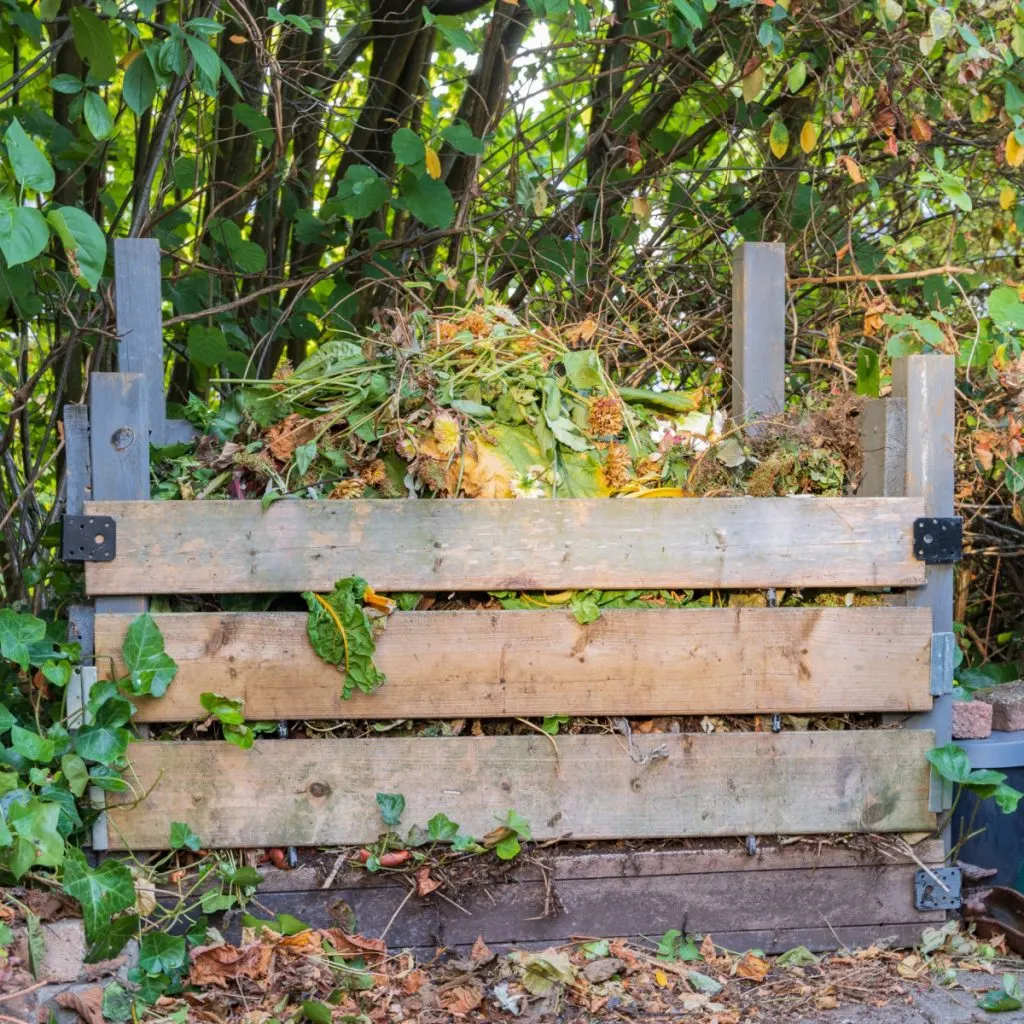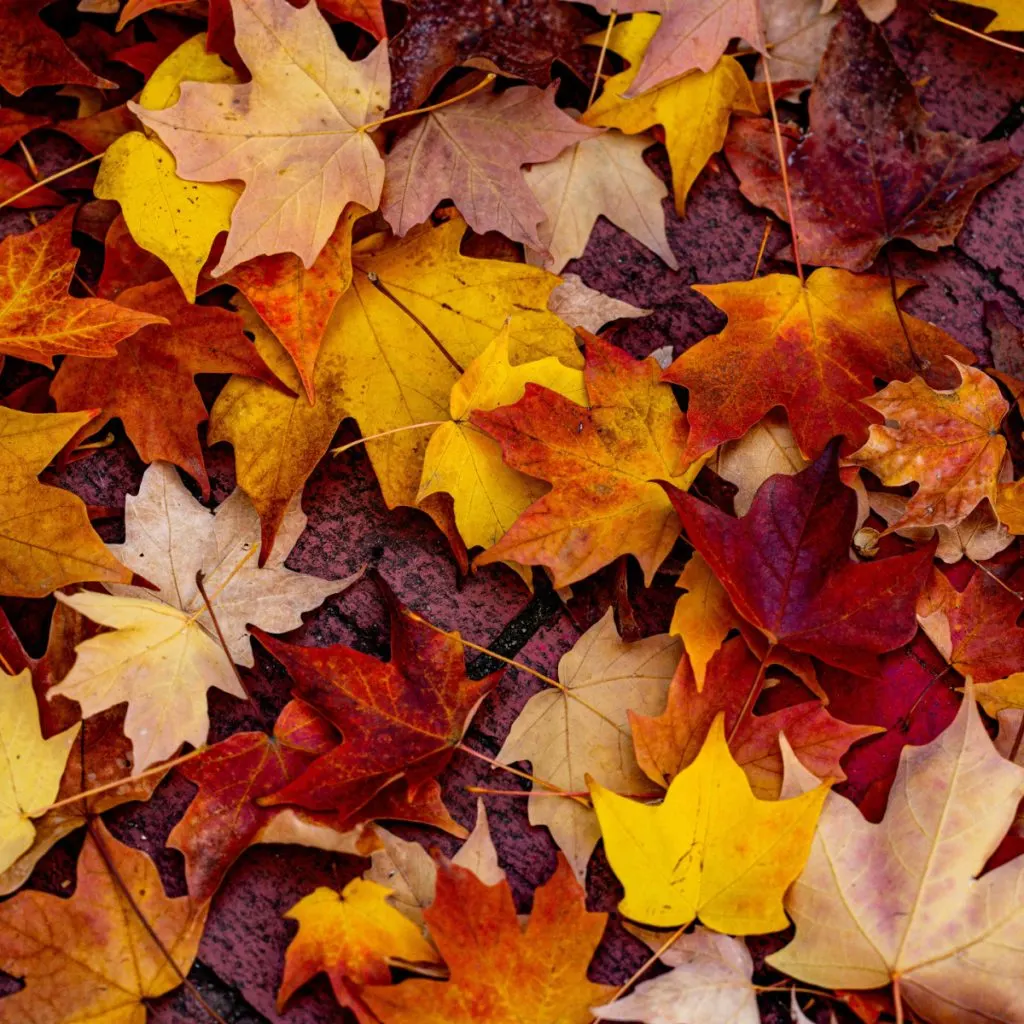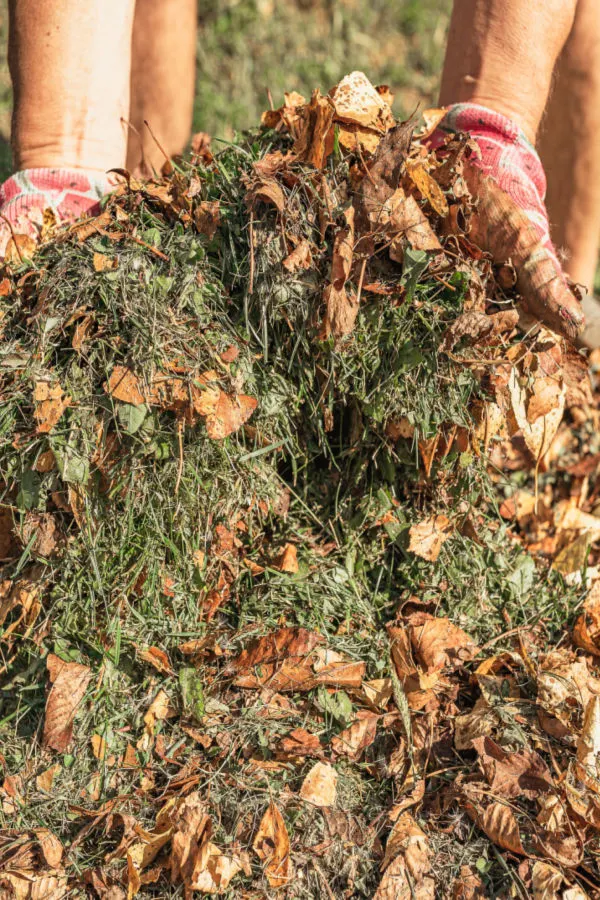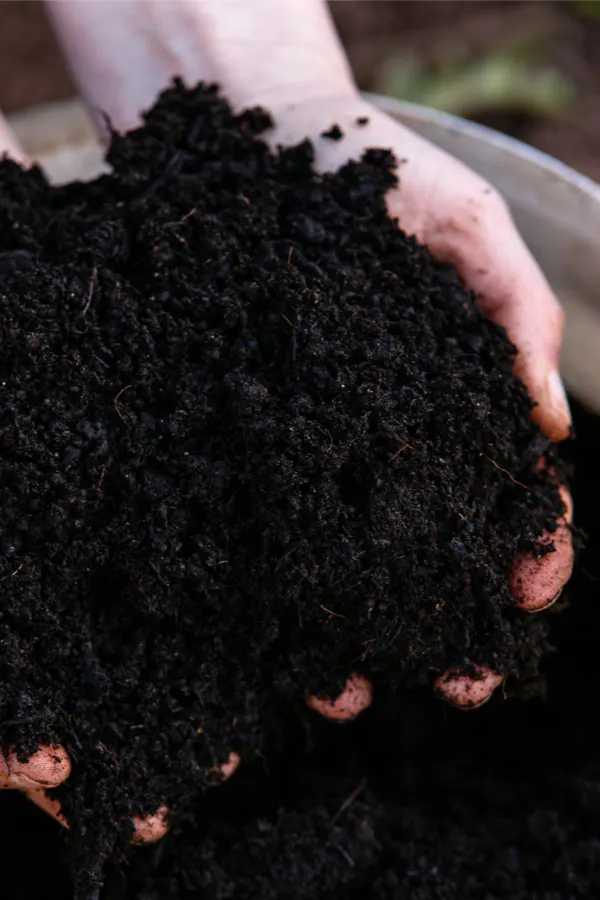Looking to create the perfect fall compost pile – and have loads of incredible compost ready for all of your planting needs next spring and summer?
When it comes to getting your garden and flowerbeds to produce and grow better than ever, compost is the answer. Whether mixing it into the planting holes of vegetable plants, annuals or perennials, or adding it to potting soil for hanging baskets and container plants, compost helps provide vital nutrients to young plants.
In addition, it helps create better soil structure and improves drainage, all while helping the roots of plants retain moisture more easily. One thing is for sure, the more compost you can have on hand in the spring, the better. And the easiest way to do that is to create a fast working pile this fall!

Why Fall Is Great For Creating The Perfect Compost Pile!
The good news is that fall might just be the easiest of all times to find all the materials you need to put together the perfect compost pile. Not only is there a wide variety of excellent composting materials available, they can be found with ease. And even better, quite often in large quantities!
From falling leaves to spent plants from vegetable and flower gardens, there are always plenty of incredible ingredients at the ready throughout fall. Especially when you add in the soil and spent foliage from summer’s hanging basket and container plants, grass clippings from the yard, and vegetable peels and kitchen scraps.
Together all of these materials can create the perfect mix of ingredients that heat up quickly and break down fast. But the real secret to success is getting that mix just right – and that is what today’s article is all about!
How To Create The Perfect Fall Compost Pile – With Ease!
Getting The Right Size & Ratio Of Ingredients
What you put in your compost pile and how you put it in will make a big difference in how quickly you will have finished compost.

If a compost pile is made up entirely of dry, brown materials such as leaves, sticks and dead plant material, it can take a long time to break down. Likewise, if it is made up of all “green” materials such as grass clippings, decaying fruit, manure or coffee grounds, it can also take months if not years to totally decompose.
But when you get the right mix of both, the magic happens. That’s because the pile has a good ratio of dry and wet materials to have just enough moisture and energy to produce heat, but not so much that it suffocates it and slows the decomposition. Sound complicated? It’s not!
For a fast working fall pile, the simple secret is to use a ratio of nearly 4 parts dry materials to one part green. As an example, if you add four buckets or bags of shredded leaves, one bucket or bag of greens should go in too.
Shred Those Ingredients! How To Create The Perfect Fall Compost Pile
But here is the real secret to a fast pile – whenever you add materials, make them as small as you can get them. Why? Because the smaller the ingredients going in, the faster they will break down. And that means your compost will be ready to use by spring.

It’s also important to keep your pile at the right size. For best results, a pile around 3′ x 3′ x 3′ has enough mass to heat up, but is still small enough to maintain with ease. (For easy DIY compost bins – check out our DIY 3’x3′ Single & Double Compost Bin Plans)
Finally, when creating a fall pile that you want to use the following spring, it’s important to try to make the pile all at once or over just a few short weeks. That allows it to heat up, begin decomposition, and have enough time to be ready by spring. Unfortunately, if you keep adding materials, it simply won’t be ready.
With that in mind, here is a look at some of the best fall materials to use to get that pile started!
The Best Materials To Use In The Fall For Composting – How To Create The Perfect Fall Compost Pile
Leaves
There is no better easier way to build a great base for a fall compost pile than with leaves. Not only are they abundant, but they can be easily gathered. Even if you don’t have trees in your back yard.
Take a drive through any wooded area this time of year, and you will find mounds of leaves for the taking. Many times, they are already bagged and at the curb for your convenience!
The key to composting leaves is to shred them before putting them into the pile. For a quick shred, use a push or riding mower. In addition, select leaves for composting that are well balanced in nutrients such as maple, ash and fruit tree leaves.

It’s important to avoid using too many oak leaves in your pile as they can make the pile more acidic. Black locust and chestnut leaves should be kept out of a compost pile completely due to their toxicity to vegetable plants.
Pots & Containers & Grass Clippings – How To Create The Perfect Fall Compost Pile
Old flower pots and container plants and soil are one of the best ingredients to add to a fall pile. The soil will help to add density and the spent foliage from the plants breaks down quickly.
Green grass clippings (fresh cut grass) add both nitrogen and moisture to a pile. Mix them in well with the ingredients to heat it up fast. You can actually add grass clippings during the first few weeks after you build your pile. This can help greatly in keeping moisture in.
Grass clippings break down quick, so they will still have time before spring to completely decompose. Do not add clippings if you have your yard treated chemically. It can create compost that can contain herbicides that can harm or even kill plants.

Garden Crops – How To Create The Perfect Fall Compost Pile
As you clean out your fall garden crops, be sure to chop and add them to your pile. Fall crops that have bolted such as lettuce, spinach, and other greens are great “greens” to add to the pile. So are corn stalks, pumpkin and gourd vines.
One thing to avoid is tomato and pepper plants and their fruit. They simply carry too much risk for disease, and the seeds from the fruit can sprout nonstop next year! See our article: How To Dispose Of Tomato Plants – What To Do When Tomato Plants Die
Kitchen Scraps – How To Create The Perfect Fall Compost Pile
Be sure to include all of the kitchen scraps from your vegetable garden and cooking. Potato peels, cucumbers peels and vegetable scraps are great green materials. And don’t forget those coffee grounds – they are perfect for helping to heat up a pile.
And while you are at it, throw in the coffee filter too. Nearly all paper coffee filters compost with ease, and with non-bleached filters, there is no worry at all. (For more tips on using those spent coffee grounds, see: 4 Great Ways To Use Coffee Grounds In The Fall – Recharge Soil, Fertilize & More!)
This Is My Garden
Follow Our Facebook Page For Great Gardening Tips And Advice! This Is My Garden Facebook Page
This Is My Garden is a garden website created by gardeners, for gardeners. Jim and Mary Competti have been writing gardening, DIY and recipe articles and books and speaking for over 15 years from their 46 acre Ohio farm. They publish three articles every week, 52 weeks a year. Sign up today to follow via email, or follow along!
